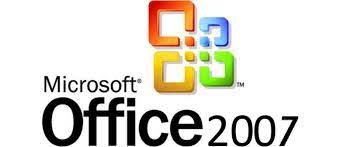Cloud computing or Cloud computing is a combination of computerization and internet technology, where data ranging from small to large scale is stored on internet servers, which allows us to access our data from various locations and via various platforms. SaaS is one of three types of Cloud Computing services commonly offered by Cloud service providers. The three types of services are SaaS (Software as a Service), PaaS (Platform as a Service), and IaaS (Infrastructure as a Service). Let’s discuss it in more detail.
1. Software as a Service (SaaS)
Software as a Service (SaaS), this type of Cloud service is provided in the form of software. Examples of SaaS are Google Apps (Docs, Sheets, etc.), Office 365, and Adobe Creative Cloud. In SaaS services, service users only need to use the application without having to understand and take care of how data is stored or how the application is maintained, because this is a service provided by the service provider.
Profit:
Users can immediately use the service for free or by paying a rental fee without having to invest in making it themselves (in-house development) or buying a relatively expensive license.
The availability and reliability of the application is guaranteed by the service provider. Users only need to focus on their data. The only devices needed by users are a computer and the internet.
Loss:
Users do not have full control over rented applications. Users cannot arbitrarily change the features provided because SaaS is multi-tenant so the features created are general features (cannot be specific to the needs of certain users). In some applications, customization can be done with limited scale and functionality.
2. Platform as a Service (PaaS)
Platform as a Service (PaaS), this type of Cloud service is provided in the form of a platform that users can use to create applications on it. Examples of PaaS are Amazon Web Services, Microsoft Azure, Facebook, etc. Things that PaaS service users can do are build applications, upload applications, test, and manage configurations.
Profit:
Users can create their own applications with many available features such as platform security, OS, database system, web server, and application framework. Users can focus more on application development.
The main feature of PaaS is usually high scalability. When the application that we upload starts to be used by many users, the PaaS service will automatically scale our application to be better at serving our application users. Meanwhile, when the application is quiet again, it will be scaled back so that the fees paid are truly in line with what we are using at that time.
Loss:
The security features provided by PaaS services are platform security, not our application security. So we still have to take into account the security risks of our own applications.
3. Infrastructure as a Service (IaaS)
Infrastructure as a Service (IaaS), IaaS type cloud services are basically physical server boxes and virtual computers. IaaS provides companies with computing resources including servers, networks, storage and data center space.
Profit:
Users do not need to physically purchase computers and equipment, carry out routine maintenance, and configure devices.
Loss:
Users must be connected to the Internet to use it, and if they need additional resources, they must contact the service provider. Users take care of their own OS, security, applications, databases, frameworks, etc. because what is provided is only the server and network.
The following is a visualization of the explanation above:
In general, the disadvantage of using Cloud Computing is that users must be connected to the Internet and the confidentiality and security of the data that we place in the Cloud. However, using Cloud Computing also has many benefits such as ease of access (only by connecting to the internet network), cost efficiency, high flexibility, and ease of monitoring with the interface which is usually also provided by Cloud Computing service providers.
Cloud Computing is now starting to penetrate various aspects, one of which is starting to be implemented in the world of education. Cloud computing allows universities to cut the costs of purchasing hardware and software and save on expenses for recruiting IT personnel. Campuses only need to pay per month according to usage and get data back-up services and software updates automatically at no additional cost.


